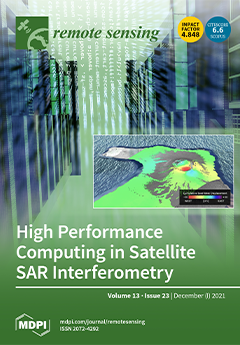Snow-induced radiative forcing (S
nRF), defined as the instantaneous perturbation of the Earth’s shortwave radiation at the top of the atmosphere (TOA), results from variations in the terrestrial snow cover extent (SCE), and is critical for the regulation of the Earth’s energy
[...] Read more.
Snow-induced radiative forcing (S
nRF), defined as the instantaneous perturbation of the Earth’s shortwave radiation at the top of the atmosphere (TOA), results from variations in the terrestrial snow cover extent (SCE), and is critical for the regulation of the Earth’s energy budget. However, with the growing seasonal divergence of SCE over the Northern Hemisphere (NH) in the past two decades, novel insights pertaining to S
nRF are lacking. Consequently, the contribution of S
nRF to TOA shortwave radiation anomalies still remains unclear. Utilizing the latest datasets of snow cover, surface albedo, and albedo radiative kernels, this study investigated the distribution of SnRF over the NH and explored its changes from 2000 to 2019. The 20-year averaged annual mean S
nRF in the NH was −1.13 ± 0.05 W m
−2, with a weakening trend of 0.0047 Wm
−2 yr
−1 (
p < 0.01) during 2000–2019, indicating that an extra 0.094 W m
−2 of shortwave radiation was absorbed by the Earth climate system. Moreover, changes in S
nRF were highly correlated with satellite-observed TOA shortwave flux anomalies (
r = 0.79,
p < 0.05) during 2000–2019. Additionally, a detailed contribution analysis revealed that the S
nRF in snow accumulation months, from March to May, accounted for 58.10% of the annual mean S
nRF variability across the NH. These results can assist in providing a better understanding of the role of snow cover in Earth’s climate system in the context of climate change. Although the rapid SCE decline over the NH has a hiatus for the period during 2000–2019, S
nRF continues to follow a weakening trend. Therefore, this should be taken into consideration in current climate change models and future climate projections.
Full article





